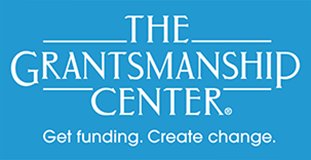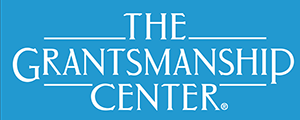Finally! Your proposal is nearing its final draft. It’s now time to pay attention to a final detail - punctuation and page layout. Both of these give important cues to the reader, and those cues will help guide the reader smoothly through the proposal.
Blog
Communicating about Federal Grant Status
If you’ve been notified that your federal grant/s have been canceled or paused, or if the future for your awarded grants is uncertain, it is important to have a communications plan. Develop a media kit with press releases, handouts, and talking points for your designated representative/s. Include examples of how your grant-funded services have helped your community. Be sure to balance statistics with the human face, just as you do in grant proposals.
Crisis Planning
Planning for the possibility of a funding shortage is a daunting task for non-profits. Boards must take a hard look at programs and budgets, with input from key staff and perhaps even key donors and funders. The reality is that organizations will need to consider doing less with less, not more with less. Here are some things to consider in planning for budget impacts . . .
Losing a Grant
You’ve learned and confirmed that one of your grants is being discontinued, and you are unsure of the reasons. What next? First, find out why. Was the termination due to policy changes or funding cuts by the funder? Were there performance or compliance issues on the part of your organization as the recipient?
When a Federal Grant Suddenly Ends
Political changes can lead to changes in laws, policies, and rules. In the first few months of 2025, many federal grants and contracts have been terminated. Thousands of federal employees have been fired. The functions of complete agencies have been eliminated. There continues to be uncertainty about the future of many federal grant programs. While the legal status of these actions may still be unknown, nonprofits must decide how to move forward.
Context is Everything: Part 2
In an earlier blog, I discussed how to strengthen your proposal by adding context to the Problem Discussion with descriptive detail. Part Two is about adding meaning to the proposal by giving the reader a sense of place. The reader of your proposal may not live in the same area of the state as you, or even in the same part of the country.
Context is Everything: the Problem Statement
When writing a grant proposal, assume the reader doesn’t know much about your community or the challenges and problems your organization is addressing. By providing context for the information you present, you will help the reader better understand the issues at stake in the proposal. Context can supply insight into the particular makeup and/or challenges of your community and can help create a mental picture for the reader.
Writing for Impatient Readers
We have written the proposal. We believe it’s the most well-thought-out plan, carefully designed to have a huge impact on our target population. Yet if the reader’s mind wanders after a few minutes, or worse—they yawn—our proposal may be in trouble.
A Quick Review of Logic
As we state in our textbook, Grantsmanship: Program Planning & Proposal Writing, the grant proposal is a logical argument for funding. The logic of the the proposal flows from the logic of your Program design. You see a problem and you think of a way to fix that problem. The solution comes logically from your understanding of the problem. If there is a break in the logic, the program plan will appear to have flaws. This is especially critical when you are writing the grant request. The funder will know if there are flaws in the logic, and it will weaken your proposal.
Let's Talk About the Problem, Part 2
(or The Lack of a Program is Not the Problem)
Planning programs proactively makes good sense. We plan programs that are compatible with our organizational mission, capabilities, and community needs. Sometimes, though, in real life a funding opportunity lands in our inbox and there may be pressure to apply. We will need to shift to reactive planning—not the most desirable approach.












